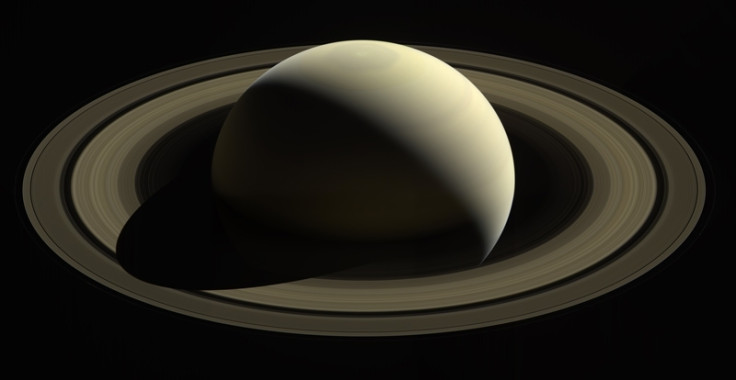Cassini spotted this weird shadow effect of Saturn's icy rings before plummeting to its death
Even three months after its death, Cassini continues to provide us with new insights into the massive gas giant and its icy rings.
Astronomers studying Cassini data have spotted a 'weird' variation in Saturn's upper atmosphere and they believe the reason behind it could be the shadow from the planet's mysterious icy rings.
Cassini plunged into Saturn's atmosphere in September, but even three months after its death, the space probe continues to provide us with new insights into the massive gas giant.
The study of the data from the spacecraft has now led researchers to a weird phenomenon – a difference in magnetically charged particles present in the northern and southern parts of the ionosphere, an upper atmosphere layer that starts at an altitude of around 300km and goes way up to 5,000km.
Between April and September, Cassini made as many as 22 orbits around Saturn. As the space probe passed through the cold and dense ionosphere, its Radio and Plasma Wave Science (RPWS) instrument captured and sent back as much information as it could. Using that data, researchers were able to study the particles present in that region.
They found that ionisation activity – when these particles acquire charge – was low in the southern part of the ionosphere or the region where the shadows from Saturn's A and B rings were falling in comparison to the northern portion.
This led the researchers to posit that the A and B rings must be completely opaque and would have blocked the extreme ultraviolet light from the Sun, which is required for interacting with and charging these particles.
This phenomenon was not observed with the other two rings, which meant they would have allowed the radiation to pass through, keeping the ionisation activity up in other regions.

However, these shadows might not be the only factors behind the variations in the particles, as per the researchers. According to a study conducted in 2013, the rain pouring from Saturn's icy rings or strong longitudinal winds could also have some role in the process. However, none of that has yet been confirmed.
"I think the jury is out on ring rain," study author William Kurth told Newsweek. "Radio and plasma wave observations – coupled with others – will ultimately shed light on this."
It is also expected that the research would help astronomers get more insights into the behaviour of particles in the atmosphere of Saturn and other similar planets.
The research was recently presented at the American Geophysical Union and published in the journal Science.





















